Blue Jays: Ranking the Year’s Past Trades

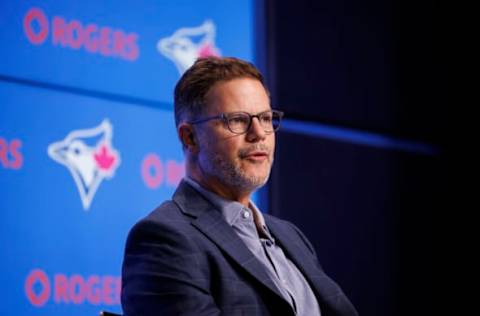
It’s approaching September, and we are currently watching the Blue Jays team that we were all expecting way back in March. This roster began forming way back in 2015, when the Jays signed a teenage Vladimir Guerrero Jr. as an International Free Agent. Since then, pieces have continued to be added and subtracted in the hopes of creating that ultimate roster that’s capable of going all the way. Through development, key free agent signings, and many trades, the Blue Jays currently sit at a 76.8% chance of making the postseason per Baseball Reference. Despite losing two impact players from the previous year, this year’s club has improved in many facets of the game.
Better defence and pitching has been a large part of the club’s identity, to go along with a ever-so gifted offence. This roster has been boosted since this past winter, most notably through a number of trades. The process of addition began in the offseason, ceased over the course of the lockout, picked up once Spring Training commenced, and concluded at the beginning of August after the trade deadline. The players, front office, and fans alike have no choice but to be content with the additions made.
At this point, it’s a suitable time to take a step back and compare these trades to each other. All players have, who have been both acquired and shipped off, have had ample opportunities to provide results to their respective clubs. Deciding if a trade was good or bad is an interesting conversation, and to me it comes down to four things;
1. What was given up?
2. How large of a need was it for the Blue Jays?
3. How have the received player(s) performed?
4. How have the given up player(s) performed?
With this criteria in mind, let’s rank the seven trades made by Ross Atkins since this past offseason.
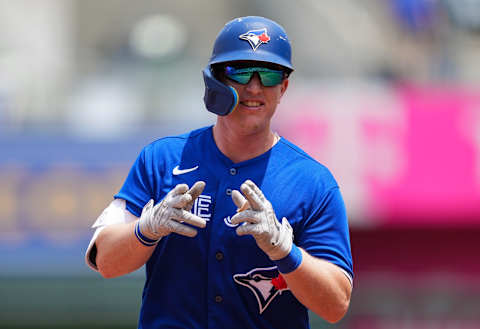
7. Bradley Zimmer (OF) for Anthony Castro (RHP)
This trade was completed with the purpose of adding competent depth to the outfield, and I believe it did that, and only that. Zimmer, who has since been DFAd and joined the Phillies, before re-joining Jays recently, is a gifted fielder. Fangraphs has him at 5 DRS and an OAA of 2. However, he is generationally untalented in the batter’s box. Through 87 plate appearances as a Jay he accrued a 27 OPS+, which translates to him being 73% worse than the average major league hitter.
On the positive side, Atkins didn’t give up much to receive Zimmer. Anthony Castro, a former Tigers prospect, worked 24.3 innings out of the Jays pen the season prior. Castro possesses a plus slider, leading to high K numbers. Despite his potential, he’s seen minimal impact in Cleveland this year, only throwing 13.1 innings in a stacked bullpen that already features Emanuel Clase and James Karinchak.
Overall, this trade could ultimately be considered a wash for both clubs. Neither players made significant impact on their respective new teams.
6. Zack Collins (C) for Reese McGuire (C)
This was a swap of catchers which made a lot of sense at the time, and still does to this point. Made towards the end of Spring Training, the trade brought in a catcher who fit the Blue Jays roster better than Reese McGuire did. Zack Collins is a left-handed hitting catcher with power, who lacked in the defence department. Collins also had minor league options left on his contract. McGuire, who’d been with the organization since 2016, was the opposite of Collins’ makeup. A glove first catcher with little offensive potential, who was also out of options.
Overall, Collins has struggled during his time in Toronto’s organization. His low average, on-base, and power output doesn’t mesh well with being a below average fielder, and his performance in AAA Buffalo in the meantime hasn’t turned any heads either. But, how could anyone forget about his April. During a time with not much offence to cheer about, Collins was a spark plug in the early part of the season. In April, he hit to an .816 OPS while both catching and DH-ing. He excelled in the clutch too, hitting .429 with two outs and runners in scoring position in the limited opportunities he had in those situations. Needless to say, he cooled off, and Collins has essentially been a non-factor since May.
Regardless of Collins’ struggles, McGuire didn’t exactly pan out either. His time on the White Sox saw him hit .225 and produce a 56 OPS+. He would later be traded to the Red Sox, where he’s gotten off to a hot start.
Much like the seventh ranked trade on this list, this transaction remains sort of redundant. Neither players have made or left significant impacts on their new organizations.
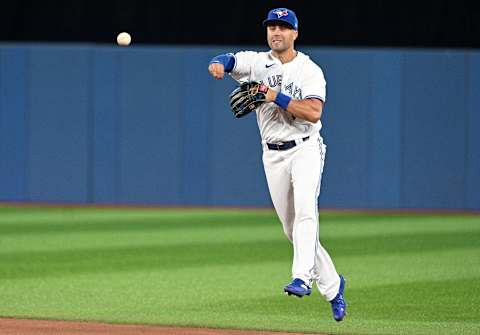
5. Whit Merrifield (UTL) for Max Castillo (RHP) and Samad Taylor (UTL)
A confusing trade initially, but as the weeks went on afterwards, Whit Merrifield‘s purpose became clear. With Springer being restricted to DH duties, a capable and experienced presence was needed to take reps in the outfield, and in came Merrifield. On days where Tapia takes reps in centre, Whit is also capable of playing a solid second base.
His 16 games as a Blue Jay haven’t knocked anyone’s socks off. A .229/.302/.292 slash line isn’t overly impressive, but his above average defensive ability and quickness have been a breath of fresh air when he’s in the lineup. Whit will continue to play a similar role down the stretch, and also seemingly going into the next few years, as he does not become a free agent until at least after 2023.
The haul given up for the veteran utility man wasn’t overly impressive. RHP Max Castillo and minor league UTL Samad Taylor went the other way in the deal. Castillo had thrown some important innings for the Jays prior to that point in the season, but wasn’t a major player in present or future plans. Taylor was having an admirable season in AAA, but again, not a major factor in Toronto’s future plans.
4. Raimel Tapia (OF) and Adrian Pinto (UTL) for Randal Grichuk (OF) and cash
This swap during Spring Training was a bit of a shock. Raimel Tapia and Randal Grichuk are opposites of each other. Tapia, the contact heavy, strikeout resistant player, while Grichuk utilized a more all or nothing approach that led to inconsistency. Regardless, both served similar roles, a reserve outfielder capable of offensive contribution, and can play all three outfield spots.
Tapia has been somewhat mediocre during his time in Toronto. Outside of a few electric moments, including a walkoff sac-fly and an inside the park grand slam, his 86 OPS+ isn’t quite what a club would want from an outfielder receiving a fair amount of playing time. The more underrated part of the acquisition for the Blue Jays was the least known name in the deal, Adrian Pinto. Pinto, a free agent signee from Puerto Rico, was coming off of a season in Rookie Ball which saw him post a 1.029 OPS while spending time in the middle infield and centre field. While taking a step back during his time in Dunedin this year, the tools are still there for him to be a productive player.
In terms of the cost for the Jays, Grichuk and about nine million in cash hasn’t proved too steep of a cost. The former Blue Jay wields a slashline of .275/.318/.371 over 112 games played this season. While Grichuk’s overall numbers aren’t awful, his .598 OPS on the road shows that he’s getting a friendly boost from the altitude at Coors Field.
This deal served a purpose for both clubs, as the Rockies needed more pop in the outfield, and the Blue Jays sought to diversify their offensive makeup. However, the addition of Pinto in the deal grants the Blue Jays an edge in my books.
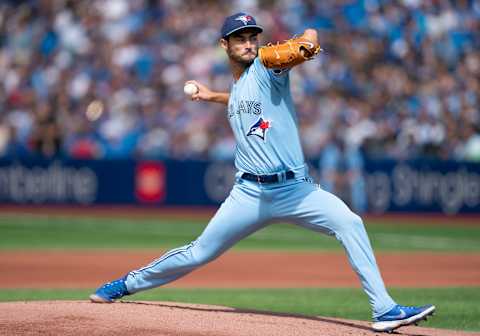
3. Mitch White (RHP) and Alex De Jesus (INF) for Nick Frasso (RHP) and Moises Brito (LHP)
When the Blue Jays really needed a starter, they got one in Mitch White. While he wasn’t the type of household name fans were expecting, White brought a quietly impressive resume over from his time with the Los Angeles Dodgers. A career FIP of 3.88 at the time of the move, White excelled at missing barrels and limiting hard contact. Through four starts in a Blue Jays uniform, his 3.34 FIP compared to his inflated 5.89 ERA shows that he’s run into some bad luck. While White wasn’t who fans were expecting, he is a more than welcome addition to the staff. The Blue Jays also acquired a young prospect by the name of Alex De Jesus. The young native of the Dominican Republic appears to be a well-rounded player, spending time in the middle infield and posting an .811 OPS at two levels of A ball.
The haul given up concerns me a bit, as I thought Nick Frasso was someone worth keeping an eye on. His eye popping strikeout to walk numbers are worth noting, and he was on track to impact the Blue Jays possibly next season. However, with the emergence of guys like Ricky Tiedemann, the Blue Jays young pitching remains strong. Moises Brito has some impressive numbers of his own, though out of the bullpen.
Overall, this was a necessary and well played acquisition by the front office. White has more years of team control, and offers the club versatility for the years ahead.
2. Anthony Bass (RHP) and Zach Pop (RHP) for Jordan Groshans (INF)
This past deadline, in addition to the clear need for a starting pitcher, there was also a desperation for relievers. High leverage, high potential arms were on the Blue Jays shopping list at the beginning of August, and the mission was accomplished after this trade with the Miami Marlins. Anthony Bass, a former Blue Jay, was in the midst of a career season before the trade. His overall 1.43 ERA on the season, paired nicely with a sparkling 0.95 WHIP, make him a clear high leverage reliever. Zach Pop, on the other hand, comes with less experience. The Blue Jays love what the Brampton native has to offer, however, and as do I. He ranks in the 89th percentile in average velocity, while only walking 0.9 batters per nine innings this year. His ability to pound the zone with such velocity makes him an intriguing arm for years to come.
The haul for these two right-handers was none other than former first round pick, Jordan Groshans. The highly touted prospect wasn’t turning many heads during his time in Buffalo this season, as his lack of power and consistency was cause for concern. With the infield being a strength of the Blue Jays, both now and in the future, Groshans was expendable. This was a simple case of dealing from an area of strength, to strengthen an area of weakness, and the trade has already paid dividends.
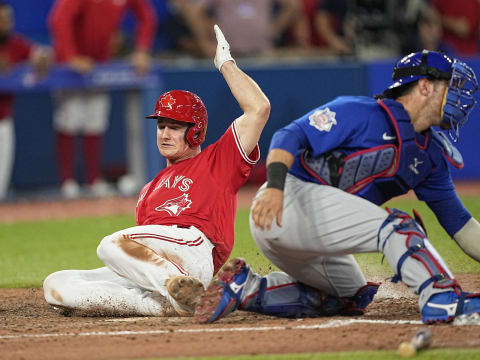
1. Matt Chapman (3B) for Gunnar Hoglund (RHP), Kevin Smith (INF), Zach Logue (LHP), Kirby Snead (LHP)
Ranking as the best trade over the past season, the acquisition of Matt Chapman has meant a lot to the club. The consistency, durability, defence, and offence have all been noteworthy, and he’s the best third baseman Toronto has seen since the likes of Josh Donaldson. Chapman is having a season on par with the best of his six year career, and the Blue Jays even extended him throughout the rest of his club control, making him a Blue Jay through 2023.
Though his OPS+ is sitting at a noteworthy 121, his peripherals suggest he could be performing even better. Fangraphs shows Chappy has an average exit velocity in the 96th percentile, a hard hit rate in the 98th percentile, and other important categories like chase rate and barrel percentage all being above the 92nd percentile, it could be argued that Chapman’s base stats are an underrepresentation of just how good he’s actually been.
This trade has the chance to be an absolute swindle by Ross Atkins, as the haul given up to Oakland hasn’t exactly amounted to much just yet. Zach Logue and Kirby Snead have both been worth negative WAR, while Kevin Smith’s OPS+ of 51 doesn’t offer much to write home about. The potential future asset for Oakland, Gunnar Hoglund, just started throwing professionally this season after recovering from Tommy John surgery. He’s thrown eight innings, but his high upside is what made the Blue Jays take him in during the first round of the 2021 draft.
Next. Comparing Bichette to other AL shortstops. dark
Overall, this trade is a clear win for the Blue Jays, and by far the best the front office has pulled off since the offseason began last winter. Chapman has been everything the Blue Jays needed him to be, and they get him for next season as well.